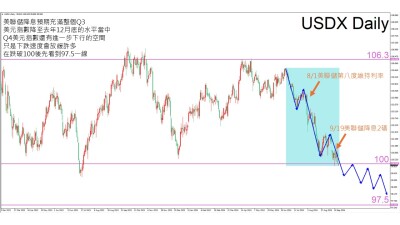The Federal Reserve’s Shift and Its Implications
The rate cut has sparked debate over whether it can prevent a looming recession in the US. This is the fourth time since 2000 that the Federal Reserve has entered a rate-cutting cycle.
In the past, rate cuts were triggered by sudden events leading to sharp economic downturns, forcing the Fed to adopt an accommodative monetary policy to rescue the economy. This time, however, the cut is pre-emptive, as a recession “cloud” is hanging over the US.
Economic Indicators and Fed’s Adjustments
The latest rate-hike cycle had a clear objective: to combat inflation. Through a series of intense and aggressive tightening measures, inflation in the US fell from a peak of 9% to the current 2.6%.
However, unemployment rose sharply from 3.7% at the start of the year to 4.3%, signaling an economic slowdown and reigniting recession fears.
With regard to inflation, the Fed’s statement on its rate decision did not change much, reiterating that inflation is close to the 2% target. However, its description of the job market shifted from “moderating” to “slowing”.
Dollar Index and Global Financial Markets
To balance the risks to economic growth caused by inflation control, the Fed has now started to lower its benchmark rate.
Although the rate cut was expected, the scale of the 50-basis-point reduction surprised some market participants. This has raised concerns about the possibility of a recession.
Fed Chair Jerome Powell explained that wage data from Q1 2024 and the payrolls survey may have been overestimated[1]. Cross-referencing with the Beige Book revealed that businesses are experiencing reduced wage pressure.
Powell stated that there is no current indication of heightened recession risks.
The Fed’s dovish stance is now firmly established, leading to speculation about the scale of rate cuts for the rest of the year. The latest dot plot shows a significant downward revision, with committee members now expecting rates to fall to the 4.25-4.5% range.
This indicates that there is still around 50 basis points of space for cuts, with a forecast of 25 basis points each in the November and December meetings.
For 2025, there is an expected 100 basis points of additional cuts, and in the long term, rates are predicted to remain below 3%, signaling the Fed’s dovish position for the foreseeable future.
However, rate cuts are, and have been a double-edged sword. While they can stimulate the economy, there are concerns that inflation could return. The latest Fed economic projections (SEP) show that GDP growth expectations have been revised from 2.1% to 2% for this year.
Despite this downward revision, confidence remains in economic growth for the next two years, with GDP still expected to hold at 2%. Meanwhile, the unemployment rate has been revised up to 4.4%.
The VT Markets Research Desk believes that when combined with growth expectations, the rise in unemployment is mainly due to a balance in labour supply and demand.
With no large-scale layoffs in sight, the rate cut should help alleviate downward risks in the job market.
On the inflation front, PCE inflation has been revised from 2.6% to 2.3%, while core PCE inflation has been revised from 2.8% to 2.6%.
Although this forecast appears more optimistic, the market’s focus on inflation is gradually waning. The Fed is now more concerned about the “stubborn” inflation in the housing market, where price declines have been slow, warranting close attention in the months ahead.
The Fed’s decision to cut rates will have broad and profound effects on global finance, especially the US dollar. A steep drop in the dollar index is one of the key concerns for traders.
Compared to other central banks, the Fed has been relatively slow in cutting rates. The European Central Bank and the Bank of Canada both initiated their rate cuts in June 2024, with the Bank of England following in August.
Other central banks are also expected to begin easing, which will help ease the downward pressure on the US dollar. As a result, a collapse is unlikely.
Recent Fed rate adjustments show that the dollar often reacts in advance. Since Q3 this year, the dollar index has fallen sharply from its peak of 105.7 to around 100, a substantial drop.
The VT Research team suggests that while a collapse appears unlikely, a gradual decline may be expected. However, it’s important to note that these forecasts involve inherent risks and uncertainties, and actual outcomes may differ. Investors should conduct their own due diligence before making any investment decisions. Past performance is not indicative of future results.
Trading Perspective and Strategic Outlook
VT Markets advises traders to adopt a bearish outlook on the dollar but to also be prepared for potential short-term recoveries triggered by new economic data or changes in Fed policy.
[1] https://www.federalreserve.gov/newsevents/speech/powell20240823a.htm
Hashtag: #VTMarkets #CFDs #CFDsbrokers #Forextrading #indices #FOMC #Trading
The issuer is solely responsible for the content of this announcement.






